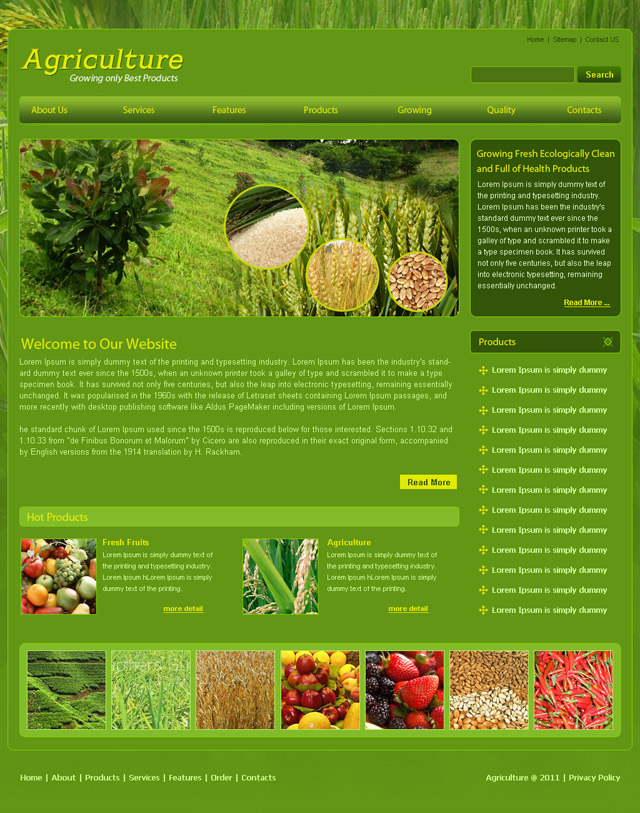We provide high quality Agricultural website development services. Our highly qualified website designer and development team will help you in developing websites for Agricultural industry.
We are designing, developing, testing, uploading and maintaining websites for agriculture industry . A website is the virtual representation of a company and it is important that website is well personalized and easy to navigate. We ensure that the information and the layout of the websites are designed in such a way that invites frequent visits by maximum readers and agricultural practitioners who surf and follow the website. The key to a widely followed website is not only the amount of necessary information present on it, but also the manner in which that information along with the statistical data is dotted over that website. Our highly skilled website developers are experts in understanding the basic needs of a successful website and with their experience, they make sure that there is a professional representation of the contents of the website.

More about Agriculture Industry:
Agriculture is the practice of cultivation of soil, planting of trees, production of crops, raising of animals and livestock and dairying for meeting the daily human needs of food as well as the economic requirements. To say the least, Agriculture is the lifeline of mankind.
A brief Overview of Products of Agriculture
Food, fibre and fuels constitute the most important products of agriculture. There are staple crops that farmers survive on, which include sweet potato, banana and pineapple among others. Cash crops like coffee, tobacco and sugarcane are sold by the farmers for money. Whilst climate plays the most significant role in determining the growth of crops in a region, over the years, advanced techniques of irrigation and farming have helped in a long way in increasing the life of crop even in the harsh climatic conditions.
Management of Crops
Tillage is the process of ploughing the soil for the purpose of providing physical, chemical and biological inputs to it. Physical input refers to the practice of planting a crop or integrating some nutrients while chemical and biological input has to do with the fertilizers and pesticides used to keep the crop pest free and healthy. The usage of chemicals though has a negative side to as well. It might cause soil erosion and affect the organisms present in the soil, which prevent the growth of organic materials thus preserving the food for plants. Pest control is extremely important activity. To control pests, the ecological approach of integrated pest management prefers some cultural practices like crop rotation, intercropping, cover crops, composting and culling rather than using pesticides. There are some acceptable pest levels over which the usage of pesticides becomes extremely important.
The nutrient management and the water management determine the quality of the crop. Fertilizers, manure and compost are the foods that crops need to survive on. The manure from livestock and animals has to be utilized and cultural techniques of crop rotation have to be followed to ensure that the crop is getting all the resources it needs to grow. Most parts of the world receive rainfall, which is not constant and even insufficient at times. This is where the need for water management comes into place. Irrigation is the most popular method that makes up for the lack of rainfall.
Livestock
Now, we have discussed about keeping our crops healthy and pest free. Also the measures for maintaining the quality of crops have been assessed. However, there is an underlying factor that is present right from the time the crop is being planted in the field till its being taken to the market for selling purpose. This is where we resort to animals and livestock. Cultivation of fields and harvesting of crops is done by using animals. The animal manure acts as a fertilizer for crops. The grown crops have to be taken to the market for selling and that is again where animals come into play. It would be safe to say that animals are the cheapest mode of transport available. The agricultural land is also used for raising livestock. As explained earlier, they are used to produce food and fibre and also act as labour.
We request you to call us at +91 9313063554 or email us at [email protected] for you software development needs.